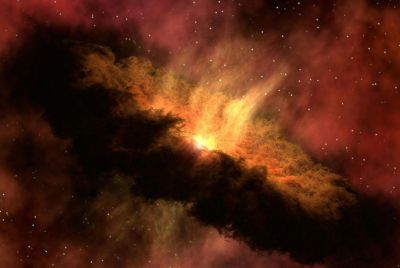Nasa Satellite Captures Ageing Star Erupting Dust [STUNNING PHOTO]

Nasa's Wide-field Infrared Survey Explorer (WISE) satellite has captured an ageing star erupting dust on the cosmos.
The star named WISE J180956.27-330500.2 that was invisible was discovered during the WISE survey in 2010. Scientists compared the images of the star with other images taken over 20 years and found that the star was 100 times brighter, according to Nasa.
"We were not searching specifically for this phenomenon, but because WISE scanned the whole sky, we can find such unique objects," said Poshak Gandhi of the Japan Aerospace Exploration Agency (JAXA).
The findings give an insight into how such ageing stars help in the process of forming other new stars, and planets. The images show that the star exploded with huge amounts of dust equal in mass to planet earth. In course of time, the star is heating the dust and causing it glow with infrared light.
"Observing this period of explosive change while it is actually ongoing is very rare," said Issei Yamamura of JAXA.
"These dust eruptions probably occur only once every 10,000 years in the lives of old stars, and they are thought to last less than a few hundred years each time. It's the blink of an eye in cosmological terms," he added.
The scientists said that the star is currently in the red giant phase of its life, which is the late phase of stellar evolution. As the stars exhaust their supply of energy they become cool and start to expand. The stars as they expand spray dust on the universe. The dust in turn gets recycled and form new stars in the solar system. The Sun is expected to reach the red giant phase in about five billion years.
The researchers studied the images taken using other satellites including the Infrared Astronomical Satellite (IRAS), which flew in 1983 and Two Micron All-Sky Survey (2MASS) in 1998.
While star was not visible in the IRAS satellite, the 2MASS satellite showed the stars sparkling in bright light. The scientists detected that the dust has continued to evolve since 1983. They believe that these findings will help them understand how the ageing stars recycle to form new stars.
The WISE satellite was launched in 2009 to map the infrared universe and capture stars that are invisible to human eyes.
© Copyright IBTimes 2025. All rights reserved.


















